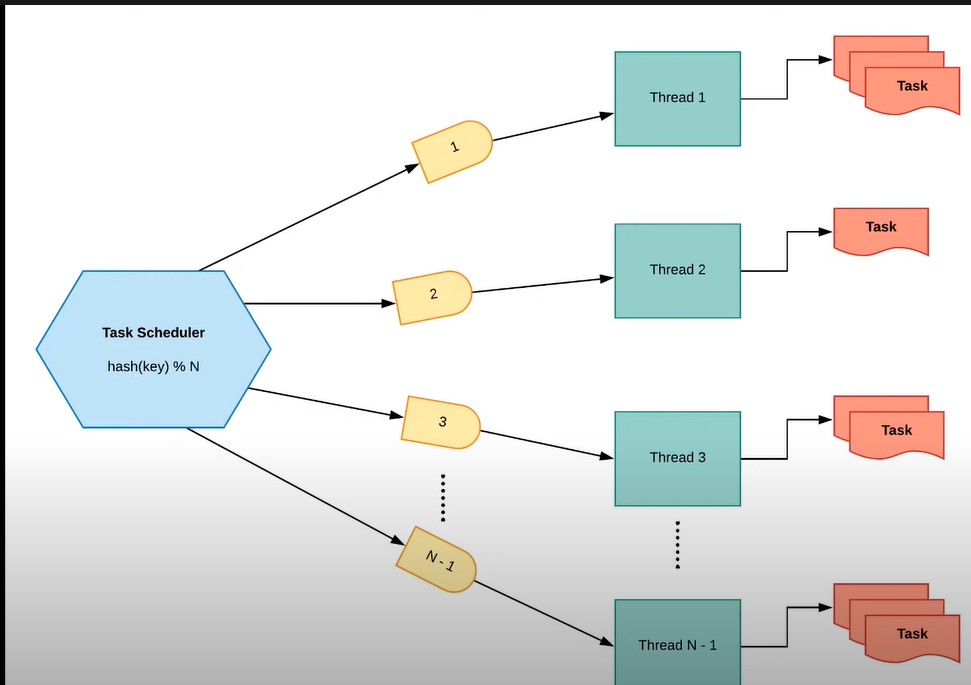- A logger implementation designed for multithreaded environments, dealing with concurrency and locking mechanisms.
- A task scheduler in
GoogleLogClientImpl.javais responsible for managing and executing threads whichstartandendthe logging. In order to ensure thestartmethod is called before theendmethod, aconsistent hashingalgorithm is used which points to the same thread which is responsible for starting and ending the sameProcess. - The same thread must be starting and stopping a process as each thread has it's own callstack which maintains order of methods called. In a multihreaded environment, many threads are active and the end method can be called before the start, resulting in memory leaks due to the process never ending (end called first, then start method called next)
- Futures are used to perform asynchronous computations, specifically ending processes without blocking the main thread.
- A lock on both the
pollandendmethod is acquired as this is needed to ensure a single thread is updating the data structures to keep consistency in reads. - Only method that can run in parallel is the
startmethod; thestartmethod does not need a lock as adding to thequeueormapis fine. - Everytime
pollmethod is called, a future is added to the List and when theendmethod targets that process, it will get removed from the list and sent back as a response to the user.
CompletableFuture<Void> removedResult = futures.remove(0);
removedResult.complete(null);
- Similar to a
producer consumertype model, however this is more complex as it requires updates to thequeueandmapwhen callingpoll()
ConcurrentHashMap- uses a multitude of locks (16 by default); each lock controls one segment of the hash. When setting data for a specific segment, the lock for that segment is acquired and is only getting locked while adding or updating the map. This allows concurrent threads to read the value without locking at all.TreeMap- In comparison to a HashMap, TreeMap is sorted by keys and implemented as aRed black tree, not aBinary search tree. Time complexity isO(log n)for insertion and deletion. Ordering is needed as a history of log metadata needs to be kept which shows when logs were started and ended.ConcurrentSkipListMap- Used as a queue. Initially designed with a TreeMap for ordering, however TreeMap is not thread safe.LinkedBlockingQueue- Optionally bounded blocking queue, nodes are kept in linked structure and stores them in FIFO structure. The head of queue is the lement which has been in the queue the longest, the tail the shortest.blockingQueue.take()will pop the head element off the queue.CopyOnWriteArrayList- Thread safe, is synchronized therefore only one thread can access at a time.
